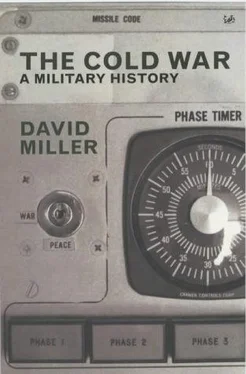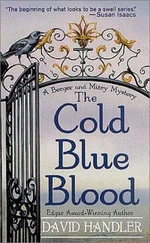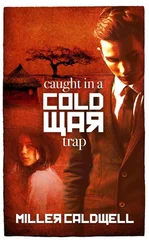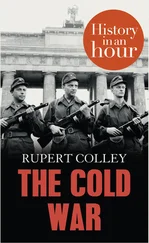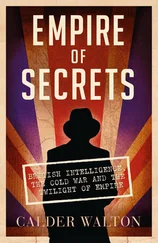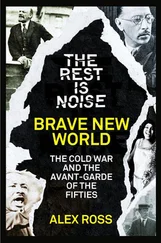Dresden: bombed (1945), 74, 372–4
Dubček, Alexander, 59
Dulles, John Foster, 355
Dunkirk Treaty (1947), 10–11, 21
East Berlin see Berlin
East Germany (German Democratic Republic): admitted to UN, 29; recognized by West, 29; escapees to West, 31, 341–2, 345; in Warsaw Pact, 55; troops in 1968 Czechoslovak invasion, 60–1; and 1980 Polish crisis, 64; navy, 181–2; amphibious capability, 227; Soviet forces in, 250–2; military forces, 253; airborne troops, 256; air force and aircraft, 312n, 316; set up, 330; Soviet attitude to, 333; unrest in, 336; and status of West Berlin, 340; US food aid to, 340; 1989 demonstrations, 345; responsibility for taking Berlin, 348, 358; in Warsaw Pact attack plans, 358, 361–2; see also Germany
Easton, Admiral Sir Ian, 140
Eglin Air Force Base, Florida, 89
Egypt: 1973 attack on Israel, 28, 319–20; as Soviet ally, 174; see also Suez crisis
Eilat (Israeli destroyer), 178
Eisenhower, Dwight D.: and ‘tripwire’ strategy, 27n; and US spy plane (1960), 27; as Supreme Allied Commander, 47; offers food aid to East Germany, 340; accepts Berlin air-ceiling limit, 341; and battlefield nuclear weapons, 355
electromagnetic pulse (EMP), 76–7,105
electronic countermeasures (ECM), 130
electronics: effects of nuclear explosions on, 72, 76–7
Emergency Rocket Communications System (ERCS), 98
enhanced-radiation warhead, 75, 77, 350, 385–6
equivalent megatonnage (EMT; nuclear weapons), 155–6
Estonia: independence (1991), 67 Ethan Allen (US submarine), 158
Europe: post-war division and disorder, 3–5; peace settlement (1946–7), 9; NATO Central Region ground forces in, 231–2; NATO defensive strategy and forces in, 237–49, 375–6; deployment of Warsaw Pact forces in, 250–6; Warsaw Pact attack threat in, 358–62, 375–6
European Advisory Commission (EAC), 328–9
European Defence Community: formed, 26
Falklands War (1982), 172, 204, 210, 214
fallout see residual nuclear radiation Federal Republic of Germany see West Germany
fighter and attack aircraft: NATO, 302–11; international co-operation on, 308–11; see also air forces
Finland: post-war settlement, 9; under Soviet domination, 14, 17
firestorms, 74, 373
flash (nuclear), 73
‘flexible response’ strategy, 237, 365
Follow-On Forces Attack, 30
Fontainebleau (France), 12–13, 47, 335
Ford, Gerald, 120
Forrestal (US carrier), 197–8
Fractional Orbital Bombardment System (FOBS), 89, 100
France: Communist Party in, 8; war in Indo-China, 9, 34, 168; signs Dunkirk Treaty, 10–11, 21; in Brussels Treaty, 11, 21; membership of NATO, 21; opposes European Defence Community, 26; in Suez War (1956), 26, 34, 37, 58, 223; withdraws from NATO integrated military command structure, 27, 33–6, 50, 168, 236; Berlin occupation zone, 33, 35, 329, 332, 346–7; nuclear programme and weapons, 33–4, 36, 141–4, 405, 419–20; post-war weakness, 33–4; air force and aircraft, 34, 300–1, 307–9; NATO bases moved from, 34–5, 50; First French Army, 36–7; and NATO telecommunications system, 52n; nuclear testing, 80–1, 405; wartime experience, 86; as nuclear-target reserve, 91; bomber aircraft, 141–2; land-based missiles, 141–2; submarines, 142–3, 157, 189, 194, 418; targeting strategy, 144; navy, 168–9; aircraft carrier, 205, 215; surface warships, 215–17; battleships, 217; and central-European strategy, 231; army in Europe, 236–7; airborne troops, 242; battle tanks, 265, 270, 435; armoured personnel carriers, 280; field artillery, 283, 437; air-defence missiles, 287; battlefield nuclear weapons, 349, 354, 357; and Warsaw Pact attack plans, 362; equipment, 381; contingency strike plan, 386
Franco, General Francisco, 81n
Franz Ferdinand, Archduke of Austria, 326
Fylingdales, Yorkshire, England, 152
Gaulle, Charles De: opposes Marshall Plan and NATO, 8; post-war position, 33; and NATO, 34, 50; return to power (1958), 34, 168; on nuclear deterrence, 144; and French navy, 168
Gdańsk, 62–3
General Belgrano (Argentine cruiser), 188
Germany: 1945 defeat, 3; reparations, 3; refugees, 5–7; reunification (1990), 67; World War II missiles, 83, 406; recovery from wars, 86; submarines (U-boats), 110, 164, 169, 184, 190, 192–4; and outbreak of 1914 war, 326–7; bombed in World War II, 378; see also East Germany; West Germany
Gero, Erno, 58
Gheorghiu-Dej, Gheorghe, 8, 65
Gierek, Edward, 62–3
Giuseppe Garibaldi (Italian cruiser), 116, 170
Glasstone, S., and P. J. Dolan: The Effects of Nuclear Weapons , 367
Gomułka, Władysław, 58, 62
Gorbachev, Mikhail: as Soviet leader, 30, 43; and collapse of Warsaw Pact, 67; and East German freedom, 345; and Warsaw Pact defence plans, 359; announces destruction of nuclear weapons, 384
Gorshkov, Admiral Sergei Georgiyevich, 176 & n, 204
Gottwald, Klement, 7
Great War (1914–18) see World War I
Greece: post-war government in, 9; USA supports, 16; membership of NATO, 22, 25, 49; hostility to Turkey, 26, 37; 1967 coup, 37; navy, 169; submarines, 191, 195; airborne troops, 242; aircraft, 308; battlefield nuclear weapons in, 350
Green, Hughie, 343
Greenland, 19, 22
Group of Soviet Forces Germany (GSFG; renamed Western Group of Forces), 250–2
Guernica, Spain, 81 & n
Gulf War, 247, 289n
guns see artillery
Gunston, Bill, 135
H-bombs: miniaturized, 87
Hackett General Sir John (and others): The Third World War , 89n, 385
Hamburg: firestorm, 74
Harmel Report (1967), 27–8
Healey, Denis, 257n
Hegel, G. W. F., 88n
Heidelberg, Germany, 240
Heihachiro, Admiral Togo, 175n
Heinemann, Dr Gustav, 344
Helsinki see Conference on Security and Co-operation in Europe
Hiroshima, 72, 75, 80–1, 124, 136, 363, 373–4
Honecker, Erich, 64, 345
Hornet (US carrier), 199n
Hoxha, Enver, 6, 64–5
Hungary: as Soviet satellite, 4, 7; ethnic Germans in, 6; Communist government in, 7; in 1946–7 peace settlement, 9; 1956 rising and Soviet invasion, 26, 37, 56, 57–9; in Warsaw Pact, 55; Soviet troops withdraw from (1990), 67; airborne troops, 256; air force in, 315–16; admits East German emigrants, 345; in Warsaw Pact attack plans, 361
Hydra, Project (USA), 115–16
Iceland: and Nordic pact, 14; membership of NATO, 20; and ‘Cod War’, 37; and Soviet naval activities, 178–9
Iceland-Faroes gap, 178–80
India: nuclear testing, 80–1; aircraft carrier, 205
Indo-China: French war in, 9, 34, 168, 282; see also Vietnam
infantry: mobility, 275–81; organization and weaponry, 280–1
initial nuclear radiation (INR), 75
Inner German Border (IGB), 231, 248, 256, 359
intercontinental ballistic missiles (ICBMs): German World War II, 84; carry H-bombs, 87; basing and launch systems, 89, 102–9, 366–7; US programme, 95–8; Soviet development, 98–102; counter-measures against, 103–4; Chinese, 146; and nuclear balance, 159–60; in US nuclear strategy, 364
intermediate-range ballistic missiles (IRBMs), 40 & n, 44, 139–40
intermediate-range nuclear forces (INF): deployed in Europe, 30, 40; 1987 Treaty, 31, 41, 43–4
International Military Staff (NATO), 32
International Relief Organization, 6
ionization of atmosphere, 76
Iran: buys British tanks, 269
Iraq: in Gulf War, 289n
Ireland, Republic of: and formation of NATO, 22
iron curtain, 4, 231; see also Inner German Border
Israel: Egypt attacks (1973), 29, 319–20; in Suez crisis (1956), 58; in Six-Day War (1967), 178; see also Palestine
Читать дальше
